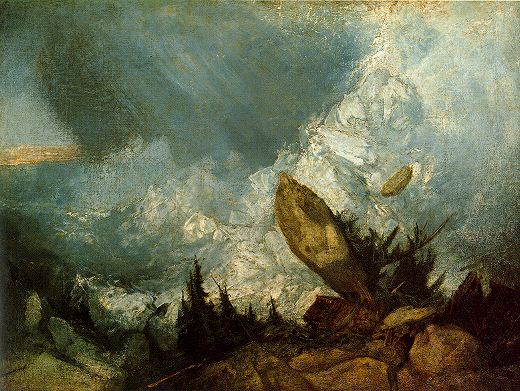|
If the reader will look back for a moment to the Abingdon, with its respectable country house, safe and slow carrier's waggon, decent church spire, and nearly motionless river, and then re-turn to this Avalanche, he will see the range of Turner's sympathy, from the quietest to the wildest of subjects. We saw how he sympathized with the anger and energy of waves: here we have him in sympathy with anger and energy of stones. No one ever before had conceived a stone in flight, and this, as far as I am aware, is the first effort of painting to give inhabitants of the lowlands any idea of the terrific forces to which Alpine scenery owes a great part of its character, and most of its forms. Such things happen oftener and in quieter places than travellers suppose. The last time I walked up the Gorge de Gotteron, near Fribourg, I found a cottage which I had left safe two years before, reduced to just such a heap of splinters as this, by some two or three tons of sandstone which had fallen on it from the cliff. There is nothing exaggerated in the picture; its only fault, indeed, is that the avalanche is not vaporous enough. In reality, the smoke of snow rises before an avalanche of any size, towards the lower part of its fall, like the smoke from a broadside of a ship of the line.
|


